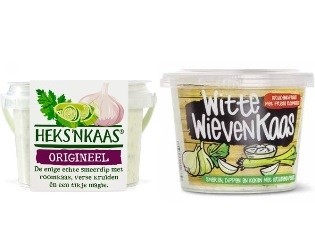

A matter of taste
Copyright is not the only issue in the dispute. There is also a case in which the trademarks of ‘Heksenkaas’ and ‘Witte Wievenkaas’ are being compared, parallel to the case on the taste of the cheese dip. According to Levola, the trademark of ‘Witte Wievenkaas’ (white wives’ cheese) can lead to confusion due to the conceptual similarity with its own ‘Heksenkaas’ (witch cheese). However, the Dutch Supreme Court (‘Hoge Raad’) ruled that one cannot assume that the public is familiar with the concept of the mythical characters ‘witte wieven’. The Court of Appeal (‘Gerechtshof’) will now have to decide again on the question whether the ‘Witte Wievenkaas’ is trademark infringing.
Moreover, Levola believes that the ‘Witte Wieven’ cheese dip infringes ‘Heksenkaas’ copyright, namely the copyright of the taste of its cheese dip. The taste of ‘Witte Wievenkaas’ would be a reproduction of the taste of ‘Heksenkaas’.
The Court of Appeal of Arnhem-Leeuwarden referred the case to the Court of Justice in 2017. The most important question was whether the taste of food can be considered a work under the EU Copyright Directive (2001/29/EC).

According to the Court, a product can only be protected by copyright when it can be identified with sufficient precision and objectivity. The Court rules that this not possible for taste. The identification of taste depends too much on factors that are related to the person who is tasting the product, such as age, food preferences and consumption habits, and the context in which the product is consumed. These factors are subjective and variable, which is why the Court concludes that taste is not subject to copyright.
Although the experience of copyrighted works such as music and literature are also subjective – otherwise everyone would like the same music and the same books – the works itself can be pinned down accurately and objectively , e.g. in the form of a stave or by the printed text in a book.
Still, the Court does not completely close the door on the protection of taste for the future. What is taken into account in the assessment,is that in the current state of the art it is not possible (yet) to precisely and objectively specify a taste, so that it can be distinguished from a taste of a comparable product. For the time being, however, there is no accounting for taste.
